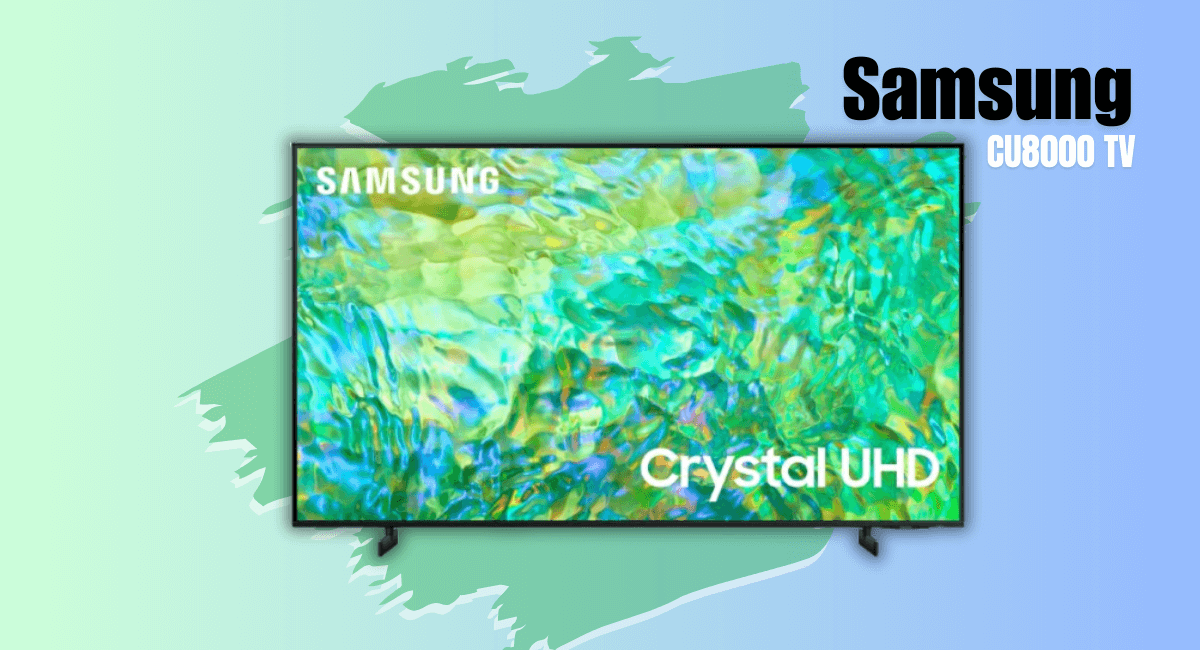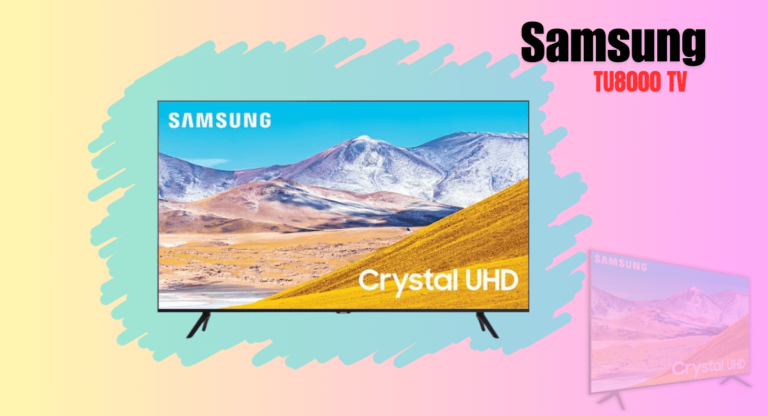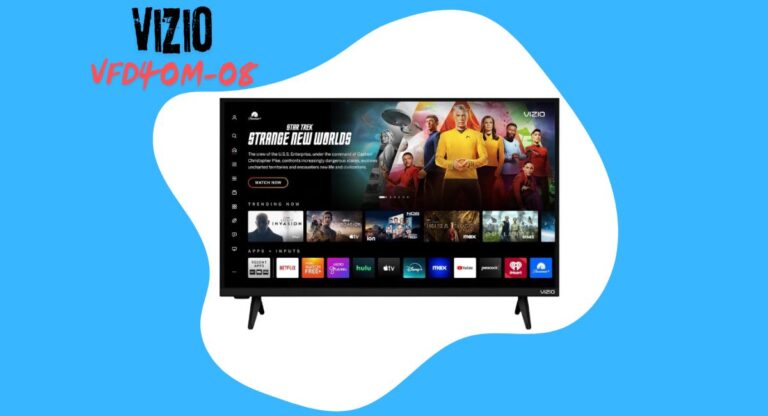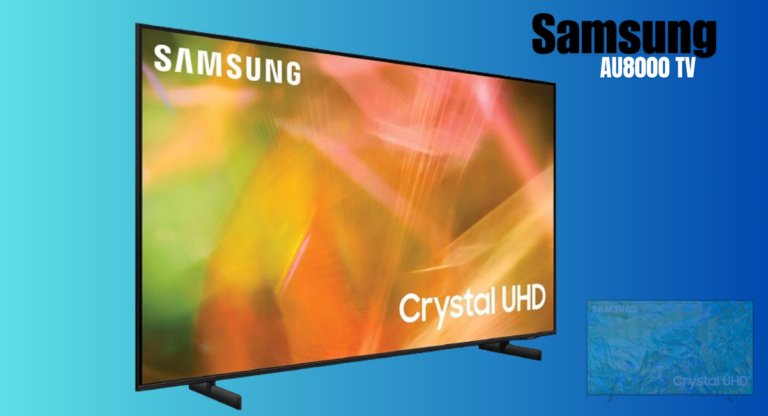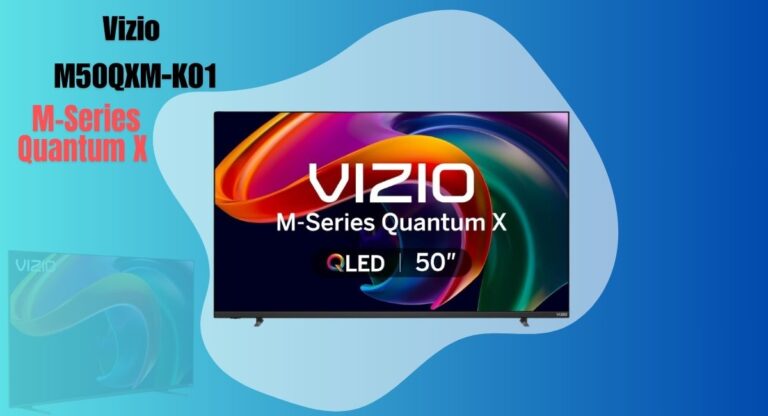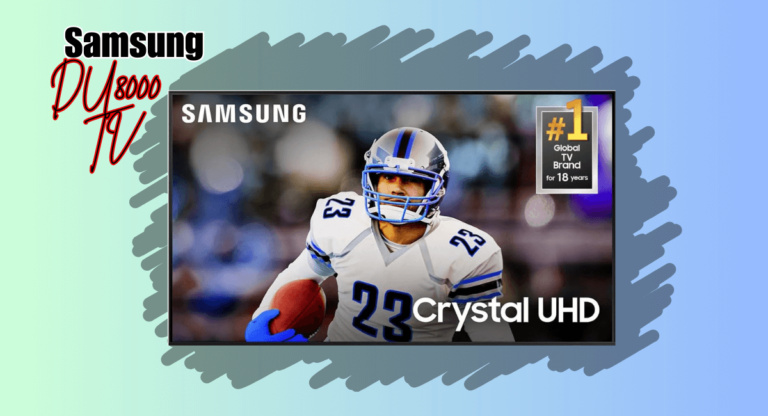Samsung CU8000 TV Review
In this Samsung CU8000 TV review, I’ll share my hands-on experience with this TV, covering everything from picture and sound quality to smart features and connectivity options. As someone who has tested a wide range of televisions, I approached the SAMSUNG 55-Inch Class Crystal UHD 4K tv with high expectations. Samsung is known for its impressive lineup, and I was curious to see how this model stacks up, especially in terms of performance and usability. Throughout my testing, I focused on how well it handles various content types, its gaming capabilities, and how user-friendly the overall experience is. Whether you’re considering an upgrade or just curious about what the CU8000 has to offer, this review will provide insights based on real-world testing and observations.
Reasons to Buy
- Good Picture Quality for the Price
- Tizen Smart Platform
- Slim, Modern Design
- HDR Support
- Low Input Lag for Casual Gaming
- Decent Smart Features
Reasons to Avoid
- Limited Brightness
- 60Hz Refresh Rate
- Lacks Local Dimming
- Average Audio Performance
- No HDMI 2.1
- Viewing Angles
Design and Aesthetics
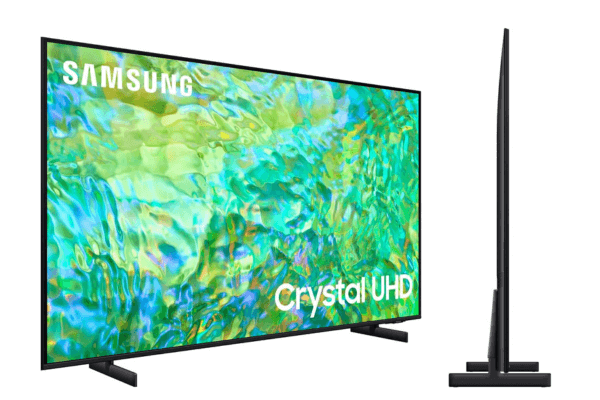
The design of the Samsung CU8000 TV is impressive, especially for an entry-level model. After having it set up in my living room, I can say it feels like a solid, well-thought-out design like the LG UR9000 TV. The first thing I noticed is how sleek and slim the TV looks. It has these really thin bezels that give it a more premium feel than I expected at this price point. It’s not curved, but it doesn’t need to be — the flat design works perfectly for most spaces.
One thing I appreciated is how stable the TV feels on its stand. The two plastic feet are quite large, but they sit flat against the table and provide really good support. I tested both height options, and the adjustability is a nice feature. In the higher position, there’s just enough space (about 3.03 inches) for my soundbar to fit neatly underneath. If you’re not using a soundbar, the lower position (2.01 inches) brings the screen closer to the table for a more streamlined look. For the 65-inch model, you do need a wide table or stand because the footprint of the feet is 42.6″ x 11.1″. I had to move some things around, but once I did, it looked great.
When I set up the TV, I noticed the back is made of plastic with these etched horizontal lines. It’s a clean look, almost identical to the previous Samsung UN55CU8000 TV model. However, the cable management leaves a bit to be desired. There are small cable channels on the back and a clip on the feet, which helps a little, but it’s not the best solution for hiding cables. I also found that the input ports are tucked away in a cutout on the back, which was frustrating to deal with when I wall-mounted the TV. If you’re thinking about wall mounting, I’d highly recommend getting a mounting arm to make accessing the ports easier.
Speaking of wall mounting, the TV uses a VESA 400×300 pattern, and once it’s mounted, the slim profile really stands out. The borders are just 0.35 inches (0.9 cm) thick, which makes the screen feel almost edge-to-edge. At its thickest, the TV measures 1.10 inches (2.8 cm), so it sits pretty flush against the wall, which I personally loved.
Materials and Build Quality
The materials and build quality of the Samsung CU8000 TV are just okay, but they didn’t quite meet my expectations, especially after testing it firsthand unlike the Roku Pro Series QLED TV. The TV is made entirely of plastic, and while the material doesn’t feel particularly cheap, it does come across as pretty generic. There’s nothing about the finish that stands out. When I first set it up, I was hoping for a bit more sturdiness, but unfortunately, that wasn’t the case.
One of the most noticeable issues is the amount of wobble the TV has. Even when I just gently nudged one corner, the entire panel shook. It doesn’t inspire a lot of confidence in its long-term stability unlike the VIZIO VFD40M-08. The stand does hold the TV up fine, but the overall wobbliness makes me worry about accidental bumps, especially if you’ve got kids or pets around. The back panel also feels a little loose, which was surprising. It almost seems like it’s not properly attached, and that’s a downgrade compared to the AU8000 model. That model, while similar, at least felt more solid in hand.
During our longer-term tests, edge-lit TVs like the Samsung smart 4k tv have shown durability issues over time. These issues include warped reflector sheets, cracked light guide plates, and even burnt-out LEDs. The plastic build may contribute to this since it doesn’t offer much in the way of protection or sturdiness for the internal components. While I haven’t personally experienced these issues in my own testing yet, I do think it’s something worth keeping in mind if you’re planning to keep the TV for several years.
Well what i can say is, the build quality of the SAMSUNG 55-Inch Class Crystal UHD 4K CU8000 leaves a lot to be desired. For a budget model, the use of plastic isn’t unexpected, but the wobble and loose back panel make it feel a bit too flimsy. It’s functional and gets the job done, but I’d say it’s a step down from some of the older models like the AU8000, which felt more solid and well-built. If build quality is a priority for you, this might not be the best choice.
Picture Quality

After testing the picture quality of Samsung CU8000 TV, I found its picture quality to be a bit underwhelming, especially when stacked against previous models like the Samsung AU8000 and TU8000. The contrast ratio sits at 4,197:1, which is decent, but the lack of a local dimming feature really stands out. In darker scenes, the blacks look okay, but as soon as bright highlights come into play, those blacks become washed out and lose depth. It’s not the immersive experience I was hoping for.
Without local dimming, the backlight remains on at a constant intensity, which means that darker scenes often look flat and washed out. This was particularly noticeable while watching movies with significant light-dark contrast. If you’re seeking a TV that handles these transitions well, you might want to check out the Samsung DU8000 instead.
When I tried watching HDR content, I was left disappointed. The brightness just isn’t sufficient for a truly engaging HDR experience. Bright highlights fail to pop, and the overall performance feels lackluster. Even switching to Game Mode didn’t provide the improvement I expected; while it does brighten things up a bit, it still falls short of what I consider adequate for HDR viewing.
Another issue I encountered was the handling of fine details in bright scenes. The peak brightness roll-off leads to some loss of detail, which is frustrating during bright outdoor sequences. You miss out on that crispness that makes HDR content so appealing.
On a positive note, the Samsung CU8000 TV excels at minimizing stutter during low frame rate content. Watching movies felt smooth and enjoyable, which was a nice surprise. Plus, it does a fantastic job smoothing out low-quality streams when Noise Reduction is set to ‘Auto.’ This was a significant improvement over earlier models I’ve tested.
However, I noticed a potential drawback for those considering this TV for computer use. It utilizes a BGR subpixel layout instead of the more common RGB. While this didn’t impact my experience with video or gaming content, I found it affected text clarity when connected to my PC.
This Samsung 55 inches tv has decent picture quality, but it left me wanting more. If you’re primarily using it for casual viewing, it will suffice, but for a more vibrant and immersive experience, I recommend looking into models that offer better contrast and local dimming capabilities.
Sound Quality
After testing the sound quality of the Samsung CU8000 TV, I found it to be a mixed experience. The low-frequency extension measures at 119.87 Hz, which isn’t exactly impressive. While the speakers don’t sound thin, they lack depth and power in the bass department unlike the VIZIO M50QXM-K01 M-Series. This means that if you’re a fan of action movies or music with heavy bass, you might find yourself wanting more.
At moderate volume levels, the sound is fairly balanced. It’s perfectly fine for casual viewing, like watching a sitcom or a light drama. However, as you crank up the volume, things start to go downhill. The overall sound quality diminishes noticeably at higher volumes, and the maximum volume isn’t particularly loud. This makes the CU8000 better suited for quiet environments, where you won’t need to push the speakers too hard.
The distortion performance is decent, especially when compared to the Samsung AU8000. I noticed an improvement in clarity at maximum volume, which is a plus. However, it still doesn’t deliver an immersive audio experience. The weighted total harmonic distortion (THD) at 80 dB is 0.205, which is reasonable, but it climbs to 0.533 at maximum volume. This indicates that while you might not notice much distortion at lower levels, the quality degrades as you push the limits.
In terms of dynamic range compression, the UN55CU8000 measures at 4.37 dB, which is acceptable but not outstanding. This means that the TV can struggle with delivering a wide range of sounds, particularly in action scenes where low rumbling sounds might be competing with high-pitched effects. The intermodulation distortion (IMD) at 80 dB is 2.61%, increasing to 4.73% at maximum volume. Again, while these figures show improvement over earlier models, they still leave room for better performance.
the sound quality of the Samsung CU8000 TV is decent for everyday viewing but lacks the punch and clarity you might expect from a modern TV. If you’re serious about your audio experience, you’ll likely want to invest in a soundbar or external speakers to enhance the overall sound quality. For casual viewers in quieter settings, it will do the job, but don’t expect it to impress in louder environments or with bass-heavy content.
Smart Features
After inspecting the smart features of the Samsung CU8000 tv, I found it to be quite user-friendly and generally smooth to navigate. It runs on the 2023 version of Samsung’s Tizen OS, which, while slightly stripped down in terms of animations compared to more premium models, still offers a solid experience. Unlike the 2021 AU8000, the Samsung UN55CU8000 supports MultiView, allowing you to multitask by watching two sources at once. Overall, the interface is easy to use, which makes getting to your favorite apps a breeze.
In terms of performance, I noticed that selecting YouTube only took about 2 seconds, which is impressive. However, changing the backlight settings took a bit longer at 5 seconds, which was a little frustrating. Still, these delays are minor in the grand scheme of things, and the system feels very smooth during general usage.
One downside is the presence of ads on the home screen, which is pretty common among modern smart TVs. Unfortunately, there’s no option to opt out of these ads, which can detract from the overall experience. You’ll also find suggested content populating the home screen, and again, there’s no way to disable this feature.
The app selection on the Samsung app store is excellent, giving you access to all the major streaming services. However, I found the smoothness of the apps to be average. Some apps loaded quickly, while others had a slight lag, which could be annoying if you’re in a hurry to watch something. Fortunately, the Samsung CU8000 tv does support casting, so you can easily stream content from your mobile devices.
USB playback is also supported, allowing you to connect a USB drive for local media playback. This includes HDR playback, which is a plus for anyone who wants to enjoy high-quality content directly from their USB. Additionally, HDR support is available on popular platforms like Netflix and YouTube, enhancing your viewing experience with more vibrant colors and deeper contrasts.
One of the standout features of the CU8000 is its remote. It’s minimalistic and user-friendly, reminiscent of the remote from the AU8000. This version comes with a rechargeable battery, which can be charged via USB-C or solar power, adding convenience and sustainability. The remote includes dedicated buttons for popular streaming services, making it easy to jump into your favorite content quickly.
Voice control capabilities are also noteworthy. The TV supports Bixby and Alexa, allowing you to change settings, switch inputs, and ask basic questions hands-free. However, it’s important to note that the voice control still can’t search for content within specific apps, which is a limitation if you frequently look for shows across different services.
The Samsung CU8000 offers a strong smart feature set that’s easy to use and functional. While it has some drawbacks, like ads and average app smoothness, it shines in usability and features like MultiView and voice control.
Connectivity and Usability
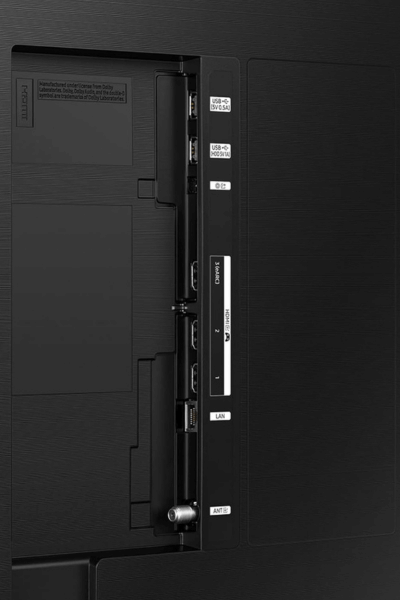
After testing the connectivity and usability of the Samsung CU8000 tv, I found it to be quite user-friendly but with some limitations worth noting. The TV excels in low input lag, especially when used in Game Mode. I recorded an impressive 12.2 ms input lag at 4K resolution with a 60Hz refresh rate, making it a great option for gamers looking for responsive performance. Even at 1080p with 60Hz, the input lag was low at 12.3 ms, which is excellent for fast-paced gaming.
However, I noticed that the input lag jumps significantly when the TV is outside of Game Mode. For instance, at 4K 60Hz, it climbed to 115.6 ms, which is far from ideal for gaming. This means that if you’re a serious gamer, it’s crucial to remember to enable Game Mode for the best performance. Unlike the Samsung AU8000, the CU8000 really requires you to switch modes for optimal responsiveness.
When it comes to HDR support, the Samsung 55” smart 4k tv has you covered with HDR10 and HDR10+, but it lacks Dolby Vision, which could be a drawback for some viewers who prioritize high dynamic range content. It also supports HLG (Hybrid Log-Gamma), making it versatile for various streaming services.
In terms of connectivity, the TV features HDMI 2.0 full bandwidth on three of its HDMI ports, which is suitable for most devices. Unfortunately, it doesn’t support HDMI 2.1, so if you’re looking for features like 4K at 120Hz, you’ll be out of luck. The TV does come with eARC support, which is a plus for passing through high-quality audio formats. However, it’s disappointing that the Samsung CU8000 tv doesn’t support DTS, as many DVDs and Blu-rays use this audio format.
For wireless connectivity, the TV supports both 2.4 GHz and 5 GHz Wi-Fi, ensuring a stable connection for streaming. The Ethernet port is also a nice touch for those who prefer a wired connection for faster speeds. However, I found the USB options somewhat limited. There’s only one USB 2.0 port and no USB 3.0 port, which could be a downside if you plan to connect multiple external drives or devices.
In terms of audio outputs, the CU8000 provides a digital optical audio out and a 3.5mm analog audio out, but there’s no analog RCA out or component inputs. The lack of options for connecting older devices might be an inconvenience for some users.
According to the test I did, the Samsung CU8000 tv offers solid connectivity options, especially for gaming, thanks to its low input lag in Game Mode. However, its limitations with HDMI bandwidth, lack of DTS support, and limited USB ports mean it might not be the best fit for everyone. If you’re primarily focused on streaming and casual viewing, it should serve you well. But for more demanding setups or serious gamers, you might want to explore other options that offer greater flexibility and performance.
Final Verdict
I found it to be a solid entry-level TV that performs adequately for casual viewers. Its sleek design and user-friendly smart features impressed me, making it easy to navigate through apps and settings. However, I felt the picture and sound quality didn’t quite meet my expectations.
As a gamer, I appreciated the low input lag in Game Mode, which made for a smooth gaming experience. However, I quickly realized that I needed to remember to switch to Game Mode for the best performance, as input lag significantly increased when not using it.
In terms of connectivity, the options are decent for everyday use, but I was disappointed by the absence of HDMI 2.1 and DTS support. This limitation may be a dealbreaker for users looking for more advanced features, especially if you’re into high-quality audio and video setups.
Overall, the Samsung CU8000 tv serves well as a budget-friendly option for those who primarily watch TV casually. However, if you’re seeking superior picture quality and enhanced audio for a more immersive experience, I’d recommend looking into higher-end models.
How did we test this model?
Our expert team conducted thorough evaluations of various smart TVs, including the Samsung CU8000. We set up each TV in a real-world home environment, assessing picture quality, sound performance, and smart features under different lighting conditions.
To gauge picture quality, we watched a range of content—from bright, colorful animations to dark, dramatic films—paying close attention to color accuracy, contrast, and motion handling. We also tested the smart platform, navigating through streaming apps, checking load times, and evaluating the user interface’s ease of use.
For sound, we listened to music and dialogue, noting clarity and volume levels. We also assessed the connectivity options, including Bluetooth and HDMI ports, and how well the TVs integrated with other smart home devices.
By using these comprehensive methods, we ensured our reviews reflect genuine user experiences, helping you make an informed decision on your next smart TV.

